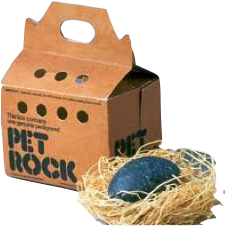The Other 70% - Looking Beyond the Stove
Failed cookstove projects – of which there have been many – are quick to blame only the product for its failure. In some cases this is totally correct. The product doesn’t function properly, save fuel or meet the needs of cooks.
In other cases you need to look beyond the stove to see what went wrong and where improvements can be made. The product is only 30% of the equation. Another 70% exists to successfully get a product to market and get people to use it and continue to use it.
Let’s look at some examples outside of cookstoves.
Example 1: Bic Disposable Underwear

What? Disposable underwear? Yes!
Bic is a trusted brand known for it’s disposable products (e.g., razors, lighters, pens, etc.). Its products are convenient and affordable and Bic is a big company with a lot of resources to throw at a product launch. So why was disposable underwear a failure? The other 70%.
Bic marketed the product in the same way as its current line and it weirded people out. Other than the disposability factor, consumers could not find a link between the underwear and Bic's other products. People were just confused and the idea of buying intimate attire from a company that also produces pens did not appeal to most women.
But disposable underwear IS a useful product. Think about it. Hotels, schools, relief/emergency situations. All could benefit from having disposable underwear on hand. But the branding, marketing and distribution channels were wrong and the product failed. The 30% was right but not the 70%.
Example 2: The Pet Rock

Of course I had to bring up this 1970s American phenomenon. It’s infamous.
It was basically just a rock in a box with instructions about how to paint it or dress it up. Gary Dahl, an ad executive, developed it after hearing his friends complain about their pets. The fad lasted for about 6 months but Dahl sold over $1.5million of them.
The success is credited to the marketing, a clever instruction booklet that came with the rock, and the packaging. The actual product was nothing special, it cost about 2 cents and didn’t really serve any needs.
This is a case where the other 70% was solid but the first 30%, the product/foundation, wasn’t. So, the fad fizzled out and people put (or threw) away their pet rocks.
Example 3: Coca Cola

We all know this story. I’m especially partial to this example since I’m from Chattanooga, TN – home of the world’s first Coca Cola bottling plant. (That’s an interesting story if you feel like Googling something.)
Coca Cola is probably the world’s most recognizable brand. In pretty much every country around the world you can
open happiness and enjoy a coke. The brand has been around for over 100 years and definitely got the first 30% right and creates new products for each market. Ever heard of a Stoney? I hadn’t until the move to Kenya where I learned it’s a ginger ale made by Coca Cola.
They also got the 70% right. Marketing, distribution, use of micro-entrepreneurs, etc. Coke has done it and done it well.
It’s the full 100% that makes sustainable businesses. It also makes successful, sustainable cookstove projects. The cookstove is the foundation but the branding, marketing, distribution, financing, end-user training, monitoring & evaluation and after sales services needs to be on top.
We’ve gotten to work with our customers on the other 70%, now EcoZoom East Africa is revving up and doing the full 100% in Kenya. Stayed tuned as we blog about how it’s going, what we’re up to and how many people in the slums of Nairobi are benefitting from the Zoom Jet.












← Older Post Newer Post →